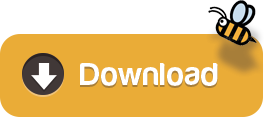Here are steps for running Google Chrome in full screen Kiosk Mode on a Windows PC:
Google Chrome can run the ShopTill-e ePOS Till System in full screen locked in Kiosk Mode without any toolbars or the address bar & can also print silently in the background. Kiosk Mode keeps the user 'locked' into the POS screens so you can't easily jump between apps on your machine and can therefore sometimes be a little restrictive. Breaking out of Kiosk!!! I was recently asked how to get OUT of the browser once the PI is in this mode. This is actually pretty hard. Kiosk Mode for the browser was intended to lock the device as a browser. The GUI or desktop is blocked. So you’ll have to go in with SSH SSH’ing in.
1. Right click on your Desktop and go to New > Shortcut
2. Browse to the chrome.exe file (depending on your set up, it might be found here: usernameAppDataLocalGoogleChromeApplicationchrome.exe) and click Next
- You can pass it command line args to get the kiosk mode as follows: /Applications/Google Chrome.app/Contents/MacOS/Google Chrome -kiosk -app=192.168.168.53 = This opens a chrome window without any window decorations, maximized to full.
- Get more done with the new Google Chrome. A more simple, secure, and faster web browser than ever, with Google’s smarts built-in.
3. Type a name for the shortcut (ie “Chrome Kiosk Mode”) and click Finish
4. Right click on the new shortcut on your Desktop and go to Properties

5. At the end of your Target replace chrome.exe with “chrome.exe –kiosk http:// [enter URL here]” and click OK
6. Double-click the shortcut on your Desktop and it will launch the full screen Kiosk
7. To quit the Kiosk, press Alt + F4 on your keyboard.
Important: Chrome will be removing support for Chrome Apps on all platforms. Chrome browser and the Chrome Web Store will continue to support extensions. Read the announcement and learn more about migrating your app.
Chrome Kiosk Mode Macbook
Kiosk Apps are Chrome Apps that are designed to always run fullscreen using Single App Kiosk Mode on Chrome OS and do not allow the user to exit the app. They're great for a purpose-built Chrome device, such as a guest registration desk, a library catalog station, or a point-of-sale system in a store.
Hansol monitors driver download for windows. A Kiosk App can be launched manually or set to automatically launch when the device boots up. You can use a Chrome device as a kiosk by turning on Single App Kiosk mode manually for each device, or across multiple devices using the Chrome management console.
How To Get Chrome On A Mac
How they look #
Drivers kye keyboards. Once the Kiosk App starts, the user experience is dedicated to the tasks defined by the app. The app does not look like the traditional Chrome browser: there is no window frame, no Omnibox (address bar), no tab strip, and no other browser interface elements. So as a developer, every pixel of the screen is yours to use as you wish.
How they behave #
When a Kiosk App is configured to run on Chrome OS using Single App Kiosk Mode, the user has no control over the app's lifecycle. The user cannot exit the app or switch to another task. However, as an app developer, you can offer a 'logout' or 'exit' button within the app to close all its windows, which terminates the session and returns the user to the login screen.
Chrome Kiosk Mode Mac Download

Single App Kiosk Mode optimizes bandwidth use and speed by downloading and installing the app so it can launch each time without installation delays. Axesstel driver. Each time a Kiosk App launches, the system checks for updates in the Chrome Web Store to ensure that the latest app version is installed, unless the app is set to be enabled offline. Thereafter, the system checks for updates every five hours and installs the update if available. If the device is offline, the update is rescheduled to a later time when the app is back online.
Any data the app stores using the FileSystem API persists across executions of the app, allowing you to download and cache any assets your app may need while offline. As a developer, you need to ensure that user data is stored locally while offline, then synced to your data server once online (see Offline First).
Once the app is installed, it is available to anyone who walks up to the Chrome OS device. There is no need for users to log in before using Single App Kiosk Mode.
How to develop a Kiosk App #
If you know how to build a Chrome App, then you know how to build a Kiosk App because they use the same app architecture. All you have to do is set 'kiosk_enabled' to true in your app's manifest file. Your app can then run in either a regular session or Single App Kiosk Mode. If you want your app to run in Single App Kiosk Mode only, then also set 'kiosk_only' to true. This prevents the app from being launched in a regular session. For example:
To determine whether the app is being run in a regular session or Single App Kiosk Mode, you can inspect the isKioskSession boolean that's included in the launchData object from the app.runtime.onLaunched event.
If you want to monetize your app, your app must handle all payment logic. You cannot monetize a Kiosk App through the Chrome web store payment flow.
Sample apps #
Last updated: Improve article
